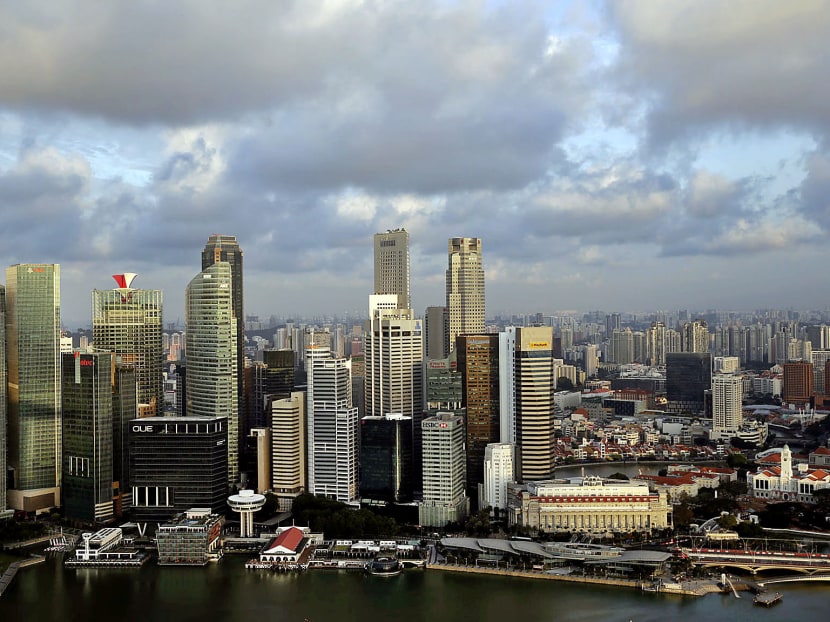Singapore’s headline inflation turns negative for first time since end-2016
SINGAPORE – The Republic’s headline inflation has turned negative for the first time since end-2016, latest monthly data showed on Tuesday (May 26), while the core inflation gauge inched deeper into negative territory.
SINGAPORE – The Republic’s headline inflation has turned negative for the first time since end-2016, latest monthly data showed on Tuesday (May 26), while the core inflation gauge inched deeper into negative territory.
The all-items consumer price index (CPI) fell by 0.7 per cent year on year in April, down from a flat reading in March, due to larger declines in the cost of private transport, services, as well as retail and other goods, said the Ministry of Trade and Industry (MTI) and the Monetary Authority of Singapore (MAS) in a joint press release.
The last time Singapore saw a negative reading for headline inflation was in October 2016. Then, the CPI index had chalked up a record 24-month slump on the back of falling global oil prices and subdued economic growth.
Core inflation, which strips out private transport and accommodation costs, fell 0.3 per cent year on year in April, down from a 0.2 per cent dip in March and remaining in the negative zone for the third straight month.
A breakdown showed private transport costs plunged 5.5 per cent last month, compared with a 0.3 per cent dip in March. This was due to a sharp drop in car prices, a larger decline in petrol prices and the suspension of Electronic Road Pricing (ERP) charges in April.
Services costs fell 1.1 per cent in April, steeper than the 0.7 per cent drop in March, as holiday expenses and air fares declined sharply, as well as a smaller increase in domestic household services costs.
The costs of retail and other goods also fell at a faster rate of 1.6 per cent last month, compared with a 0.9 per cent fall in March, due to a sharp drop in the prices of telecommunication equipment as well as a bigger fall in the prices of personal effects such as travel goods.
The decline in the cost of electricity and gas eased from -6.2 per cent in March to -5.2 per cent in April, as the Open Electricity Market had a smaller dampening effect on electricity prices due to a slowdown in new take‐up rates.
Accommodation inflation was unchanged at 0.5 per cent as housing rents rose at a steady pace.
On the other hand, food inflation rose 2.1 per cent in April, compared with 1.5 per cent in March, as non‐cooked food items recorded larger price increases. Inflation in prepared meals remained broadly unchanged, the data showed.
INFLATION TO STAY SUBDUED
Authorities expect inflation to remain subdued on the back of lower oil prices and impact from the COVID-19 outbreak, but have maintained the forecast range for both core and headline inflation this year at between -1 and zero per cent.
MTI and MAS said oil prices will stay low for an extended period. This will weigh on the prices of energy‐related components in the CPI basket.
At the same time, international measures to contain the COVID‐19 outbreak have led to supply chain disruptions, which could put some upward pressure on imported food prices, they said.
Prices of outbound travel‐related items will remain low given the sharp reduction in aviation and tourism activities globally.
The implementation of safe distancing measures in Singapore and weaker labour market conditions will dampen consumer demand, thus capping price increases for discretionary goods and services, authorities said.
The April inflation numbers came alongside a flurry of economic data also released on Tuesday, revealing the strain from the COVID-19 pandemic on the Singapore economy.
The economy is expected to shrink between 4 and 7 per cent this year as MTI downgraded official growth projections for 2020 yet again. If true, Singapore is headed for its worst-ever recession since independence.
Policymakers have also slashed the estimates for non-oil domestic exports (NODX) and total merchandise trade for the year.
On the other hand, factory output surged by 13 per cent in April, the second straight month of a year-on-year rise, largely down to gains made by the biomedical manufacturing cluster. But excluding biomedical manufacturing, overall output in April fell 3.5 per cent due to COVID-19 related measures both locally and globally. CNA
For more stories like this, visit cna.asia.







